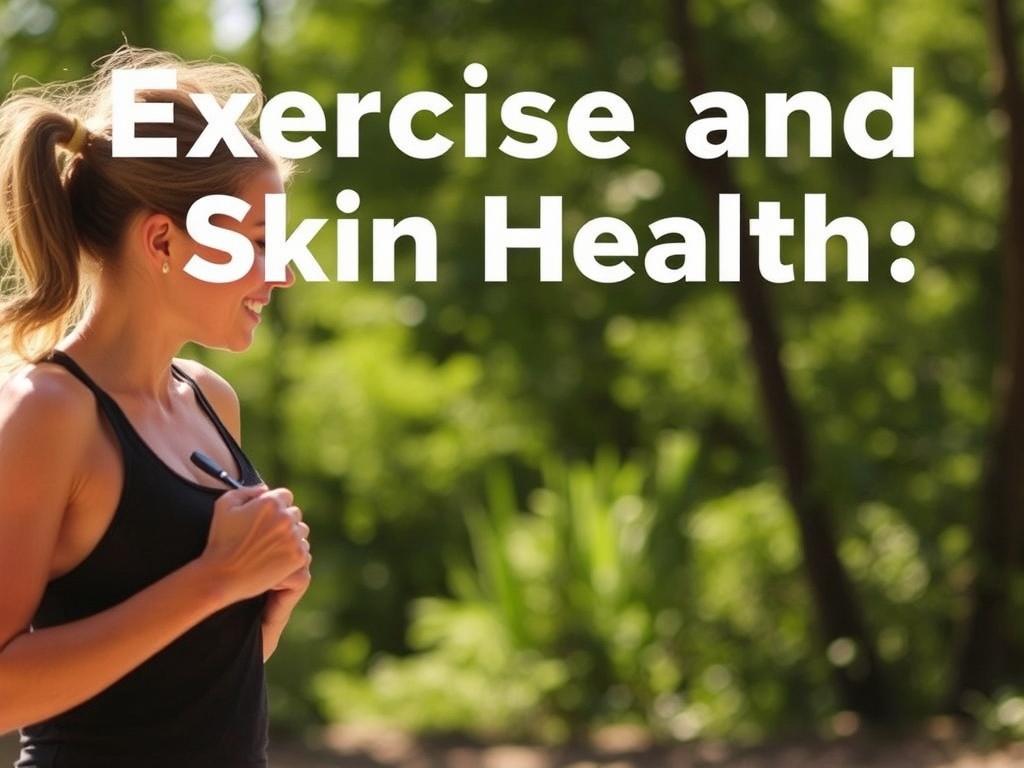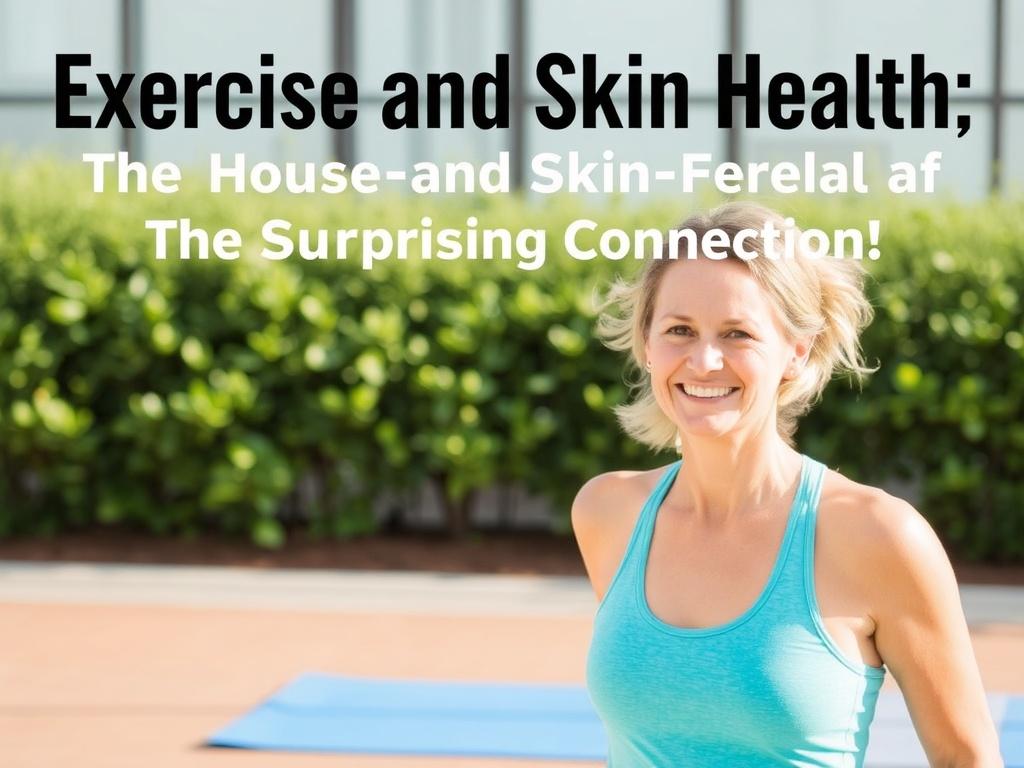Содержание статьи
- 1 The Science Behind Exercise and Skin Health
- 2 Exercise, Sweat, and Pore Health: What You Need to Know
- 3 The Role of Hydration and Nutrition in Skin Health During Exercise
- 4 Potential Risks: When Exercise Can Harm Your Skin
- 5 Exercise and Skin Conditions: How Physical Activity Influences Specific Issues
- 6 Creating a Skin-Healthy Exercise Routine: Practical Tips for Daily Life
- 7 Conclusion
When we think about exercise, most of us focus on benefits like losing weight, building muscle, or improving heart health. But there’s a fascinating and sometimes overlooked aspect of working out that deserves more attention—how exercise affects your skin health. Whether your goal is glowing, youthful skin or simply maintaining a healthy complexion, the surprising connection between exercise and skin health is something everyone should understand. In this article, we’ll explore how physical activity influences your skin’s appearance, function, and overall well-being. We’ll discuss the science behind it, practical tips for maximizing these benefits, and even some common pitfalls to avoid.
The Science Behind Exercise and Skin Health
At first glance, exercise and skin might seem unrelated, but the link is deep and multi-faceted. When you engage in physical activity, your heart rate increases, pumping more blood throughout your body. This increased circulation brings essential nutrients and oxygen to your skin, which helps repair damage and supports the production of new skin cells. This natural process can lead to a healthier-looking complexion and improved skin texture.
Moreover, exercise stimulates the body’s production of collagen, a key protein that keeps skin firm and elastic. Collagen naturally declines as we age, so regular physical activity can help slow this process, reducing the appearance of wrinkles and sagging skin. Another key factor is the reduction of stress. Exercise lowers the level of cortisol—a stress hormone that, when elevated, can trigger skin problems like acne and eczema.
But it isn’t just about circulation and hormones. Sweating, a natural consequence of exercise, plays a role in clearing out pores and detoxifying the skin. However, as beneficial as sweating can be, it’s important to cleanse your skin properly afterward to avoid breakouts caused by clogged pores.
How Different Types of Exercise Affect Your Skin
Not all exercises provide the same skin benefits. Here’s a breakdown:
- Cardiovascular Exercise: Activities like running, cycling, and swimming boost blood flow to the skin and increase oxygen delivery, enhancing skin radiance.
- Strength Training: Building muscle helps improve metabolism and hormone balance, which can indirectly benefit the skin by reducing inflammation.
- Yoga and Stretching: These exercises reduce stress levels and encourage relaxation, both of which can improve skin conditions related to stress.
- Outdoor Activities: Exercising outside exposes you to sunlight, which in moderate amounts encourages vitamin D production—but beware of sun damage.
Exercise, Sweat, and Pore Health: What You Need to Know

Sweat gets a bad reputation when it comes to skin, but it’s actually a natural and beneficial process. When you sweat, your body flushes out toxins and can help unclog pores. This process can work wonders for reducing acne and improving skin clarity. However, there’s a catch. If sweat is left on the skin too long, especially when mixed with dirt, makeup, or oils, it can cause irritation or breakouts.
To keep your skin healthy after exercising, it’s crucial to follow a proper skincare routine. This usually means gently cleansing your face soon after your workout ends. If you use gym towels or other items, make sure they are clean to avoid transferring bacteria. Also, wearing breathable workout clothes can help minimize skin irritation caused by sweat and friction.
Key Tips for Managing Sweaty Skin After Exercise
| Tip | Why It Helps |
|---|---|
| Use a gentle cleanser | Removes sweat, oil, and dirt without stripping essential moisture. |
| Apply a lightweight moisturizer | Keeps skin hydrated and balanced, preventing dryness. |
| Wear loose, breathable clothing | Reduces sweat build-up and skin irritation. |
| Pat skin dry, don’t rub | Prevents damage to sensitive skin and reduces inflammation. |
| Avoid heavy makeup during workouts | Prevents clogged pores and acne flare-ups. |
The Role of Hydration and Nutrition in Skin Health During Exercise
Exercise isn’t just about moving your body; it also demands attention to what goes inside it. Hydration plays a huge part in skin health, especially when you’re sweating regularly. Drinking plenty of water helps maintain your skin’s elasticity and prevents dryness and flakiness. When dehydrated, your skin can look dull, tired, and even more prone to wrinkles.
Nutrition is another cornerstone of healthy skin, particularly when combined with exercise. Foods rich in antioxidants, vitamins, and minerals support skin repair and shield against damage from free radicals. For example, vitamins C and E help protect the skin from environmental stressors, while omega-3 fatty acids keep it soft and supple.
Below is a list of foods that pair well with an active lifestyle to enhance skin health:
- Fatty fish like salmon and mackerel (rich in omega-3s)
- Colorful fruits like berries, oranges, and kiwi (high in antioxidants and vitamin C)
- Nuts and seeds (contain vitamin E and essential fats)
- Leafy greens such as spinach and kale (packed with vitamins and minerals)
- Green tea (loaded with antioxidants and anti-inflammatory properties)
Hydration Tips for Exercising Skin
Staying hydrated isn’t only about drinking water. Some other helpful suggestions include:
- Consume water-rich fruits and vegetables like cucumber and watermelon.
- Limit caffeinated or alcoholic drinks that can dehydrate your skin.
- Keep a reusable water bottle handy during workouts.
- Consider electrolyte-enhanced beverages for long or intense exercise sessions.
Potential Risks: When Exercise Can Harm Your Skin

While exercise generally boosts skin health, there are situations where it might cause problems if you aren’t cautious. One such risk is excessive sun exposure during outdoor workouts without protection. Ultraviolet (UV) rays can lead to premature aging, sunburn, pigmentation issues, and increased risk of skin cancer.
Another concern is skin irritation from friction, especially in areas prone to chafing during repetitive movements. This can lead to redness, rashes, or even infections if not properly managed.
Furthermore, some intense training routines can elevate stress hormones temporarily, which might worsen certain skin conditions like acne or eczema. It’s important to strike a balance and listen to your body.
How to Protect Your Skin During Exercise
| Protective Measure | Benefit |
|---|---|
| Apply broad-spectrum sunscreen | Shields skin from harmful UVA and UVB rays during outdoor activities. |
| Wear moisture-wicking clothing | Reduces sweat build-up and prevents irritation. |
| Use protective gear like hats or sunglasses | Minimizes sun exposure to delicate facial skin and eyes. |
| Practice proper post-exercise hygiene | Prevents bacteria accumulation and reduces risk of infections. |
Exercise and Skin Conditions: How Physical Activity Influences Specific Issues
Exercise can have a positive impact on various skin conditions but may also trigger flare-ups in some cases. Understanding how different issues respond to physical activity can help you manage your skin care better.
- Acne: Regular exercise can decrease stress-induced acne by lowering cortisol levels. However, sweat and bacteria can worsen breakouts if you don’t cleanse properly afterward.
- Eczema: Exercise reduces stress, which often helps control eczema symptoms. Nevertheless, excessive sweating or certain fabrics can irritate sensitive skin.
- Psoriasis: Physical activity may improve mood and reduce inflammation, benefiting psoriasis sufferers—but beware of sweat-induced itching.
- Rosacea: People with rosacea should avoid high-intensity workouts that cause overheating and flushing, opting instead for gentler exercises.
Managing Skin Conditions While Staying Active
Here are some helpful guidelines to combine exercise and skin condition management:
- Consult a dermatologist about your exercise plans and skin condition.
- Choose exercises that fit your skin triggers—for example, low-impact workouts for rosacea.
- Maintain a consistent skincare routine tailored to your specific needs.
- Wear appropriate clothing and shower soon after exercising.
- Listen to your body and modify activity if you notice flare-ups.
Creating a Skin-Healthy Exercise Routine: Practical Tips for Daily Life

Now that you know why exercise can be such a powerful tool for skin health, you might wonder how to create a routine that maximizes these benefits. The good news is, it doesn’t require drastic changes or overwhelming schedules. Even moderate exercise combined with mindful skincare can make a significant difference.
Sample Routine for Better Skin Health
| Activity | Duration | Skin Benefit |
|---|---|---|
| Brisk walking or jogging | 30 minutes, 3-5 times a week | Improves circulation and collagen production |
| Strength training (bodyweight or weights) | 20-30 minutes, 2-3 times a week | Supports metabolism and hormone balance |
| Yoga or meditation | 15-30 minutes daily | Reduces stress and inflammation |
| Hydrating and cleansing routine post-workout | Every session | Removes sweat and bacteria, prevents breakouts |
Additional Tips to Enhance Skin Health Through Exercise
- Set realistic exercise goals to avoid overtraining and skin stress.
- Wear sunscreen every day, especially for outdoor workouts.
- Keep your workout space and clothing clean to prevent bacteria buildup.
- Choose skin-friendly fabrics like cotton or technical moisture-wicking blends.
- Incorporate relaxation and sleep to complement physical activity.
Conclusion
Exercise is more than just a means to stay fit or lose weight—it’s a powerful ally for your skin health as well. The surprising connection between physical activity and skin shows that regular movement improves circulation, supports collagen production, manages stress, and helps clear out pores. Sweat can be your skin’s friend when handled properly, and hydration and nutrition further boost these benefits. Yet, it’s important to be mindful of potential risks like sun damage or irritation and to tailor your routine to your unique skin needs. By combining thoughtful exercise habits with good skincare practices, you can achieve not just better fitness but also a radiant, healthy complexion that reflects your inner vitality. Why not lace up those sneakers and let your skin glow with the effort?

